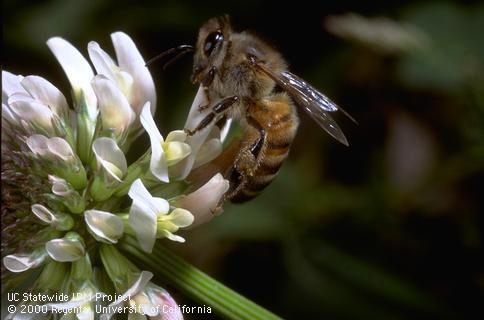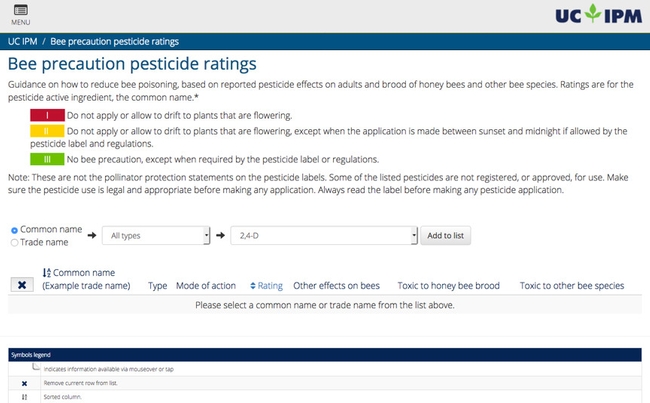Posts Tagged: UC IPM
Protect bees from pesticides by using bee precaution ratings from UC IPM
Our mission at the University of California Agricultural and Natural Resources (UC ANR), Statewide Integrated Pest Management Program (UC IPM) is to protect the environment by reducing risks caused by pest management practices. UC IPM developed Bee Precaution Pesticide Ratings to help pest managers make an informed decision about how to protect bees when choosing or applying pesticides. You can find and compare ratings for pesticide active ingredients including acaricides (miticides), bactericides, fungicides, herbicides and insecticides, and select the one that poses the least harm to bees.
Ratings fall into three categories. Red, or rated I, pesticides should not be applied or allowed to drift to plants that are flowering. Plants include the crop AND nearby weeds. Yellow, or rated II, pesticides should not be applied or allowed to drift to plants that are flowering, except when the application is made between sunset and midnight if allowed by the pesticide label and regulations. Finally, green, or rated III, pesticides have no bee precautions, except when required by the pesticide label or regulations. Pesticide users must follow the product directions for handling and use and take at least the minimum precautions required by the pesticide label and regulations.
A group of bee experts in California, Oregon and Washington worked with UC IPM to develop the Bee Precaution Pesticide Ratings. They reviewed studies published in scientific journals and summary reports from European and United States pesticide regulatory agencies. While the protection statements on the pesticide labels were taken into account when determining the ratings, it is important to stress that UC IPM's ratings are not the pollinator protection statements on the pesticide labels. In a number of cases, the ratings suggest a more protective action than the pesticide label.
The UC IPM ratings also include active ingredients that may not be registered in your state; please follow local regulations. In California, the suggested use of the Bee Precaution Pesticide Ratings is in conjunction with UC Pest Management Guidelines (for commercial agriculture) and Pest Notes (for gardeners). Each crop in the UC Pest Management Guidelines has a link to the Bee Precaution Pesticide Ratings database and provides guidance on how to reduce bee poisoning from pesticides.
For more information on protecting bees from pesticides, see UC IPM's Protecting Natural Enemies and Pollinators, and use the Bee Precaution Pesticide Ratings.
Pretty in Pink--And in Other Colors, Too!
They're pretty in pink. Well, not just pink. All other colors, too. It's National Honey Bee Day on Saturday, Aug. 20. That's when we...
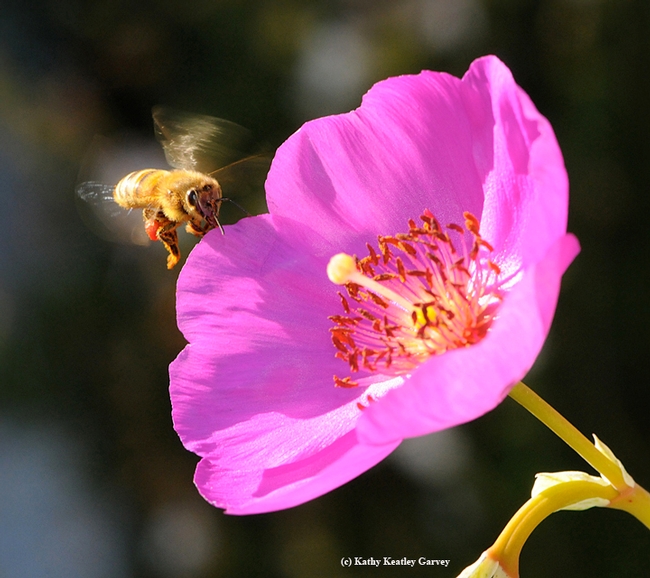
A honey bee heads toward rock purslane. (Photo by Kathy Keatley Garvey)
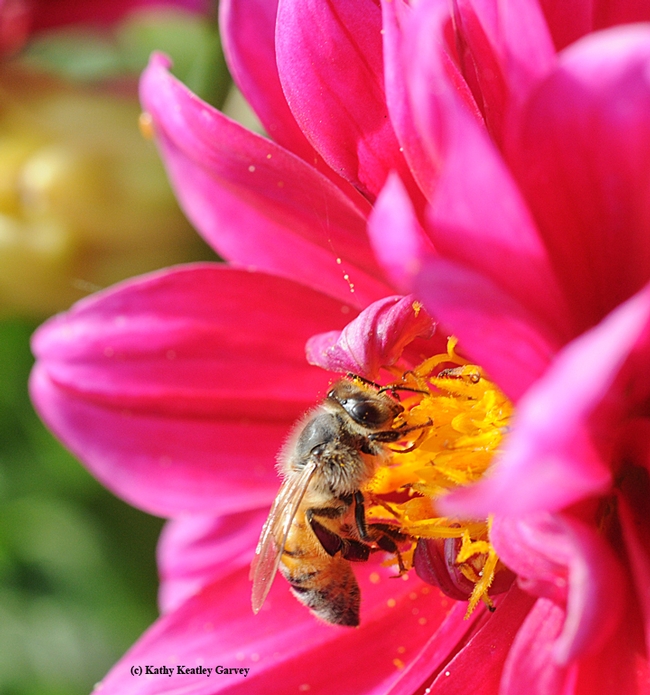
Honey bee foraging on zinnia. (Photo by Kathy Keatley Garvey)
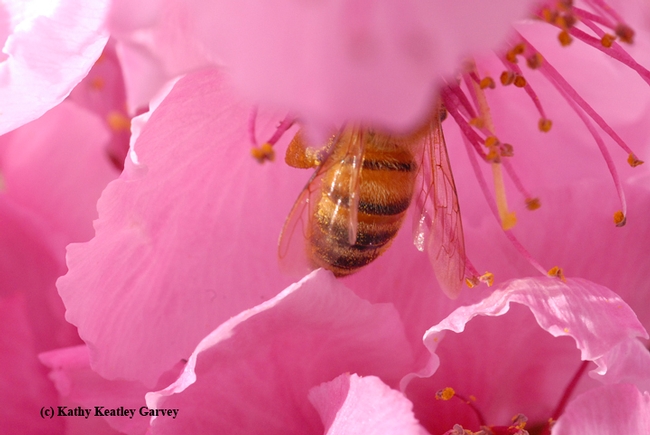
This bee took a liking to a nectarine blossom. (Photo by Kathy Keatley Garvey)
Moths! Moths! Moths! Can You Identify Your Moths?
So you have this significant garden pest--a caterpillar eating your cabbage, lettuce, tomato, squash, geraniums and petunias--and more. And then one...
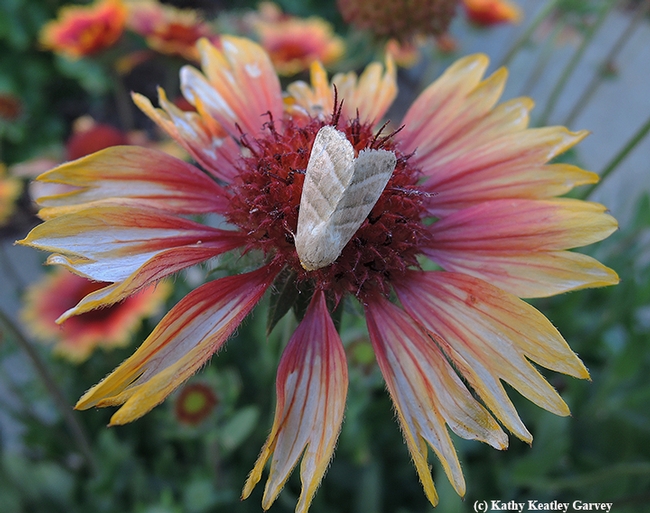
This moth is the Tobacco Budworm (as identified by Lepitopteran Art Shapiro, UC Davis distinguished professor of evolution and ecology) It's shown here on a blanket flower, Gaillardia. Photo by Kathy Keatley Garvey)
Katydids Did It
Katydids did it. When it comes to the best of the industrial-strength shredding machines, they're it. The nymphs have been feeding our Iceland...
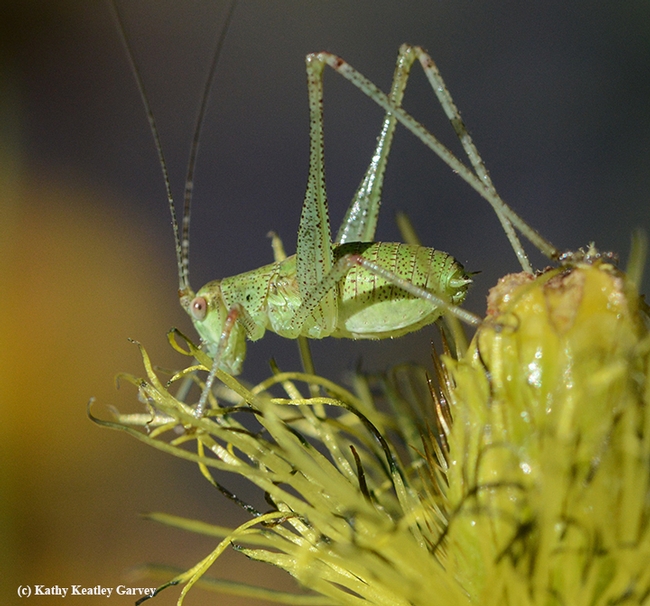
Close-up of a katydid nymph on an Iceland poppy. (Photo by Kathy Keatley Garvey)
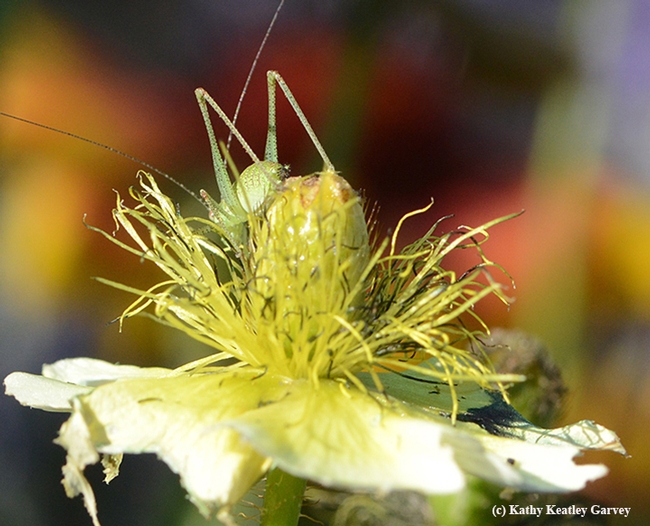
A katydid nymph, its legs visible, leaving the Iceland poppy. (Photo by Kathy Keatley Garvey)
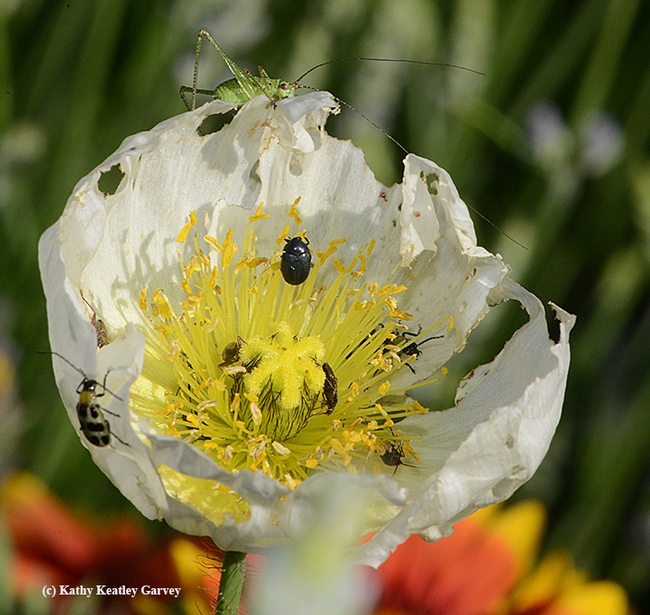
A katydid nymph (top) peers over a shredded Iceland poppy at its dinner mates. A spotted cucumber beetle is at left. (Photo by Kathy Keatley Garvey)
Countdown 'til UC Davis Picnic Day
Countdown 'til UC Davis Picnic Day... UC Davis will welcome thousands of visitors Saturday, April 16 to its 102nd annual Picnic Day, themed...
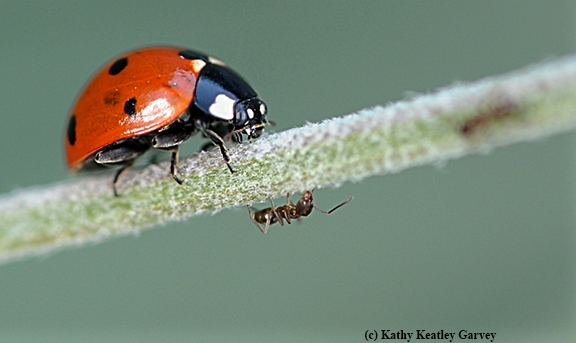
Lady beetles,commonly known as ladybugs, will be given away by the UC Statewide Integrated Pest Management Program at Briggs Hall on April 16. (Photo by Kathy Keatley Garvey)
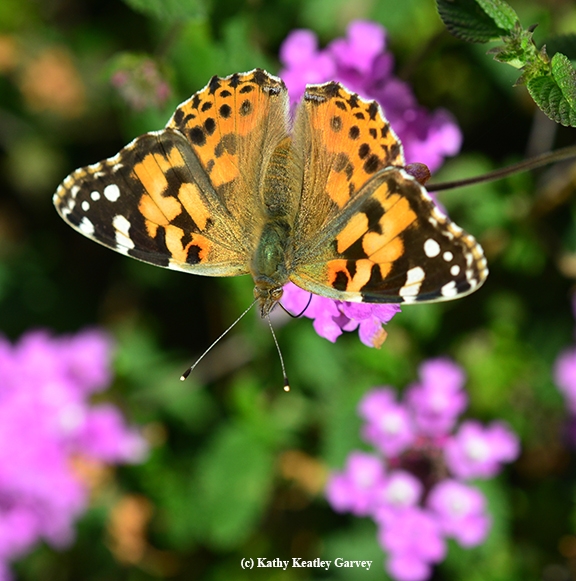
Painted lady butterflies will be part of the Pollinator Pavilion at Briggs Hall. This one is a female. There will be live insects and photographic images. (Photo by Kathy Keatley Garvey)
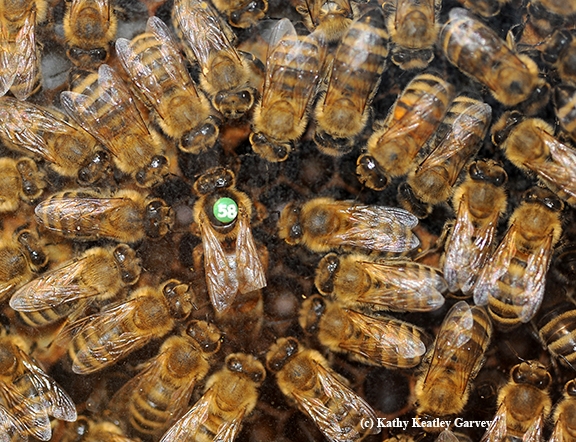
Queen bee and her retinue. A bee observation hive will be displayed at Briggs Hall during the April 16th Picnic Day. (Photo by Kathy Keatley Garvey)
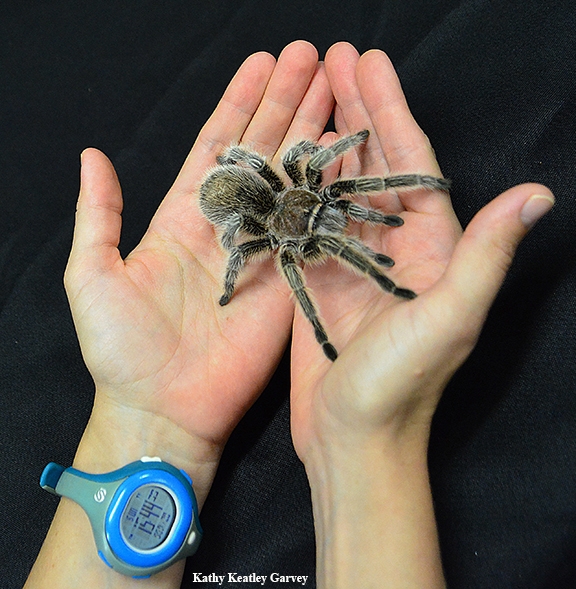
This is Peaches, a rose-haired tarantula at the Bohart Museum of Entomology. (Photo by Kathy Keatley Garvey)


